There are plenty of ways to dress up your garden.
Your choice for garden edging for lawn and garden borders is what makes all the difference and gives your garden a unique look. Most people use plastic, metal, and other faux plants for edging. But that’s not the only option and probably not the best choice.
So, why not try something unique and real to define your garden borders?
The natural plants not only spread colorful blooms and give a lavish look to your garden, but also attract birds and butterflies giving your garden a completely eden look.
Looking for the best garden plants for borders?
Check these out.

1. Astilbe
- Botanical Name: Astilbe chinensis
- Sun Exposure: Astilbe performs best in partial shade, but it can also grow in full shade.
- Soil Type: It requires moist, well-drained soil that has a slightly acidic pH (6.0).
The Astilbe is a shade-loving perennial known for its fluffy plume-like flowers in shades of pink, white, or red. Depending on the variety, these long-lasting flowers bloom from mid-spring to late summer.
Its attractive, fern-like foliage forms a clump at the base of the upright stems, offering an excellent contrast to plants with large, broad leaves.
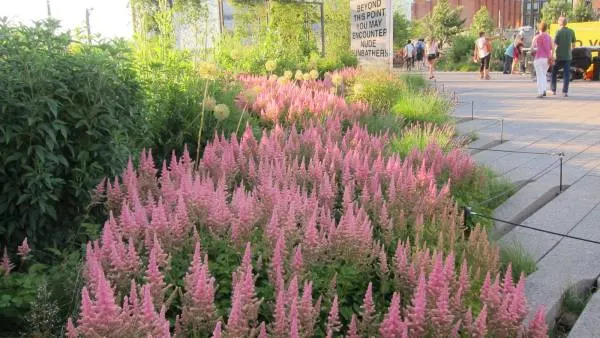
2. Catmint
- Botanical Name: Nepeta cataria
- Sun Exposure: Behaves well in light ranging from full sun to partial shade.
- Soil Type: Grows easily in rocky or clay soil but performs best in well-draining soil.
Catmint, a member of the mint family, is a low-maintenance perennial plant with lavender-blue flowers. It’s among the lower-growing varieties that can grow up to 12 to 18 inches in height but spread considerably wider to form a dense mound.
Catmint blooms from early summer through fall, inviting butterflies, bees, and hummingbirds into your garden.
Drought-tolerant and resistant to pests and diseases, catmint is a perfect addition to borders, sidewalks, and driveways.
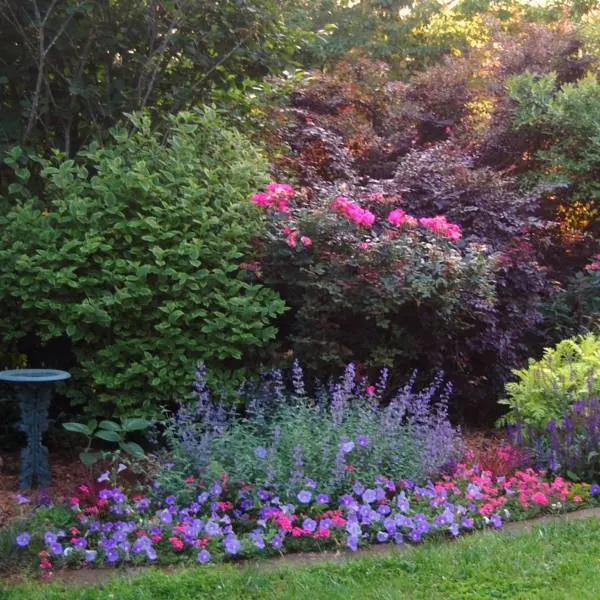
3. Dahlia
- Botanical Name: Dahlia species.
- Sun Exposure: It requires at least 6–8 hours of direct sunlight daily.
- Soil Type: Well-drainedclay and sandy loam amended with organic materials.
Dahlia comes in a variety of shapes (giant dinner plates, fluffy balls, daisy-like forms), sizes and colors—ranging from fiery red and sunny yellow to whites and deep purples.
With all these beautiful and eye-catching variations it is challenging to pick one specific species for your garden border. But you can go for a mix of bulbs to get multiple styles of blooms.
Generally, Dahliasbloom throughout summer and fall, making them excellent cut flowers.
The more you cut a Dahlia plant, the more it will bloom.
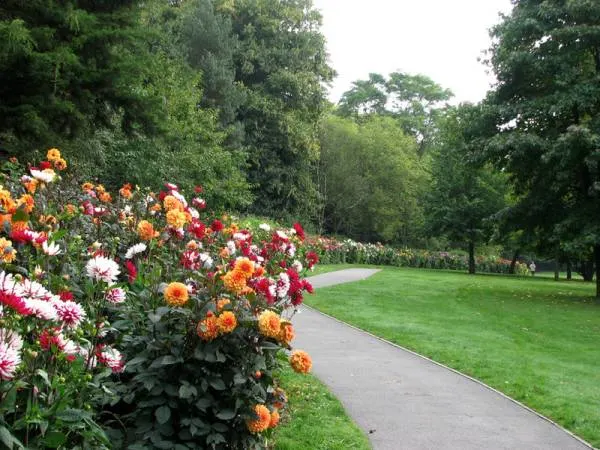
4. Coral Bells
- Botanical Name: Heuchera spp.
- Sun Exposure: The ideal light condition for this plant is part shade, which means it requires 4–6 hours of direct sunlight daily.
- Soil Type: Prefers well-drained, moist, rich soil that’s neutral to slightly acidic (pH of 6 to 7).
Coral Bells are flexible perennials known for their hardy, colorful, semi-evergreen foliage. These low-growing plants come in varieties of beautiful shade with mounding masses of red, purple, orange, and lime green leaves.
These varieties can grow 8–12 inches in height and 12–14 inches wide.
The slender stems contain elegant, bell-shaped flowers in white, pink, or red colors. But surprisingly for gardeners, it’s not the flowers that steal the attention, but the glowing foliage that enhances the beauty of the other border plants.
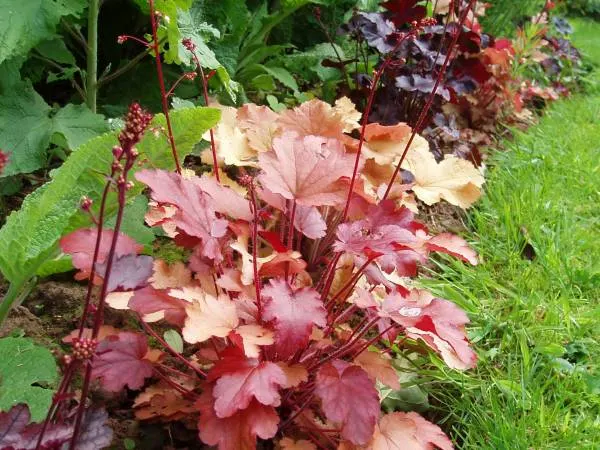
5. Creeping Thyme
- Botanical Name: Thymus serpyllum
- Sun Exposure: Creeping thyme prefers full sun.
- Soil Type: It grows well in light, well-drained soil with a neutral to slightly alkaline pH.
Creeping thyme—also called wild, elfin or Breckland thyme—is a fragrant low-growing perennial herb that forms a dense green mat.
While some of the varieties possess light purple flowers that bloom in late spring or early summer, all creeping thyme are valued for their beautiful foliage. Due to its attractive flowers and foliage, it can be used as a perfect border plant between stepping stones, patios, or terraces.
Its aesthetic appeal extends beyond mere visual delight.
When crushed, the flowers emit a fresh lime-like scent, so you can just add it to boost the fragrance of your garden.
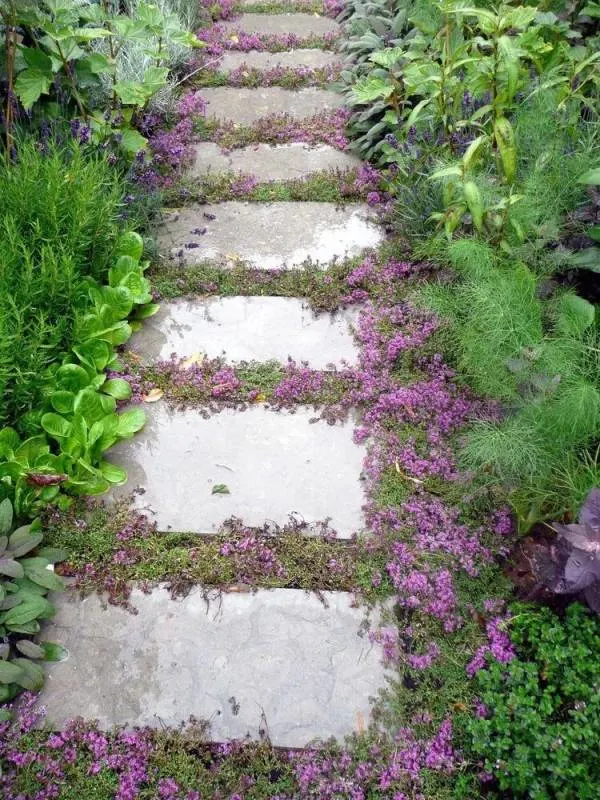
6. Daylily
- Botanical Name: Hemerocallis hybrids.
- Sun Exposure: Requires 4–6 hours of sunlight daily.
- Soil Type: Rich, well-drained soil, that has good aeration.
Daylilies are drought, heat, and salt-tolerant plants and are widely adapted to gardens across the South.
You will have a variety of colors and sizes to choose from. The most common flower colors include red, pink, yellow, orange, and purple. Daylily will brighten up your sunny borders with its dozens of bell-shaped flowers that bloom in early summer.
But many newer varieties of daylily provide season long-bloom when deadheaded.
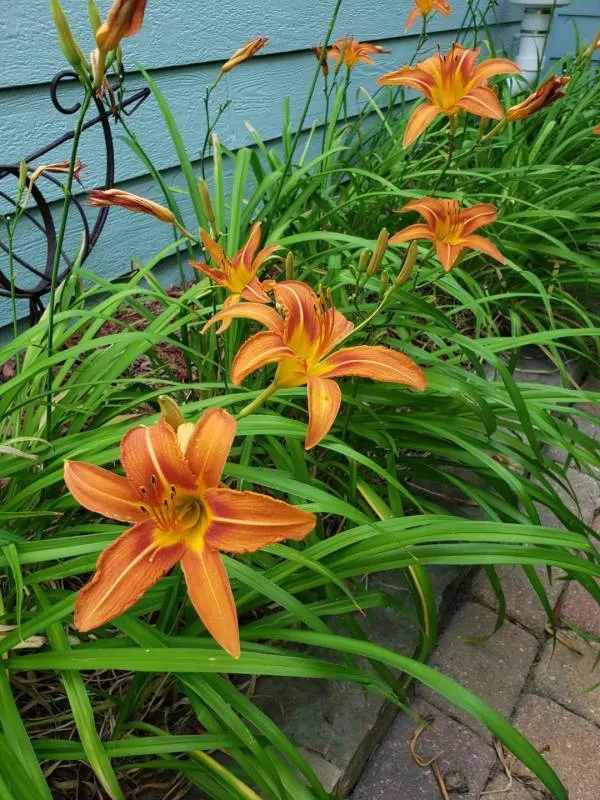
7. Hosta
- Botanical Name: Hosta plantaginea
- Sun Exposure: Perform best in partial to full shade.
- Soil Type: Fertile, moist, well-drained soil.
Hosta is a classic choice for a garden plant for the borders.
Along with the diversity of leaf patterns and sizes to choose from, you will surely find a Hosta that’s perfect for your garden.
Some of the varieties of Hostas are low-growing and so stay usually under 10 inches in height, while some other varieties have the potential to grow more than 2 feet.
Their white, blue, and purple flowers not only attract the attention of the people passing by but also attract butterflies and hummingbirds.
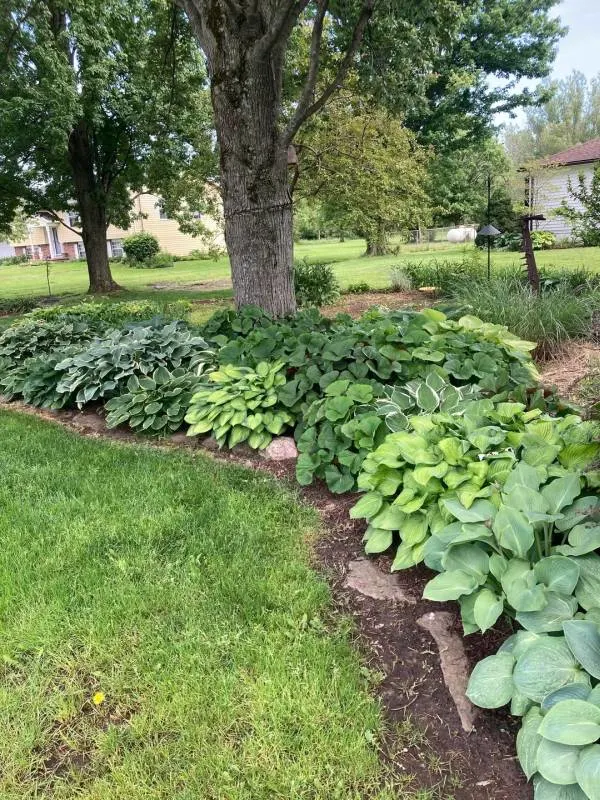
8. Lavender (Lavandulaspp.)
- Botanical Name: Lavandula spp.
- Sun Exposure: Lavender requires up to 6 hours of direct sun daily.
- Soil Type: Well-drained, slightly alkaline soil with a pH between 6.7 and 7.3.
The sunny garden path or walkway lined with French, English, Spanish, or hybrid lavender not only looks beautiful but also creates a romantic environment in the garden.
The silvery-green foliage releases its intense fragrance whenever you brush against it. The numerous spikes of purple-blue flowers stay alive with pollinators and color the landscape each spring.
Some of the hybrid varieties like “Lavender Phenomenal” can tolerate heat and humidity, which makes it easier to grow in southern gardens.
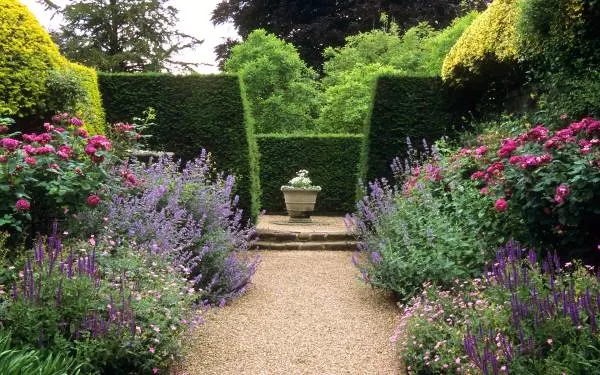
9. Mophead Hydrangea
- Botanical Name: Hydrangea macrophylla
- Sun Exposure: This plant performs best in 8 hours of direct sun or light shade.
- Soil Type: Tolerant of both clay and sandy soil.
The large globes of Hydrangea flowers which produce blooms in shades of pink, blue, purple, and white colors look beautiful in partial shade and separate the garden into smaller spaces.
Due to their deep green foliage and beautiful blooms, you can use these deciduous shrubs for lining pathways, driveways, and corridors.
The size and growth habit of Hydrangeas make them ideal to stand alone or for layering with secondary perennials like Ferns or Hostas.
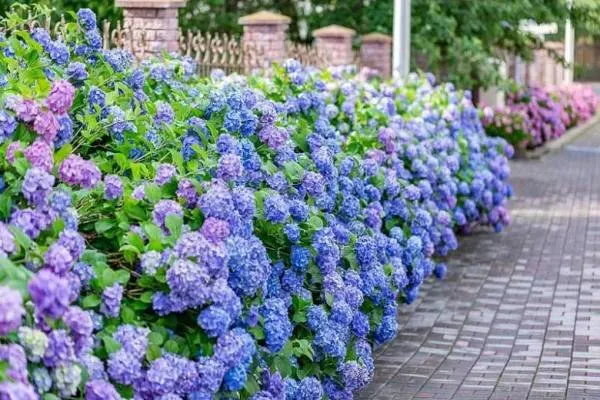
10. Veronica
- Botanical Name: Veronica spicata
- Sun Exposure: Veronica blooms best with at least 6 hours of full sun.
- Soil Type: Well-drained and moderately fertile soil.
Veronica—also known as “Speedwell,” is a low-clumping plant that looks lovely poking up along the sunny borders and garden beds. It produces blooms that appear as spikes above the foliage in shades of purple and blue, with some pink or white varieties available.
Some ground cover varieties of veronica grow to about 6 inches in height, while some mounding varieties can grow about a foot tall.
These beautiful plants attract a variety of pollinators and are resistant to deer.
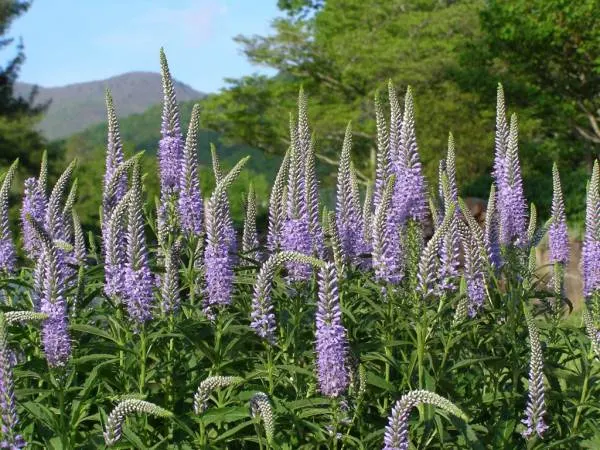
11. Moss Phlox
- Botanical Name: Phlox subulata
- Sun Exposure: Full sun to filtered shade.
- Soil Type: Moist, well-drained, humus soil with neutral to alkaline pH.
This low-growing perennial shows the arrival of spring with a majestic display of fragrant blooms. The needle-like foliage is completely covered in flowers, giving your garden vibrant pink, purple, and violet-red blooms.
Moss-Plox is perfect for edging woodland, gardens, and stonepaths from April to May.
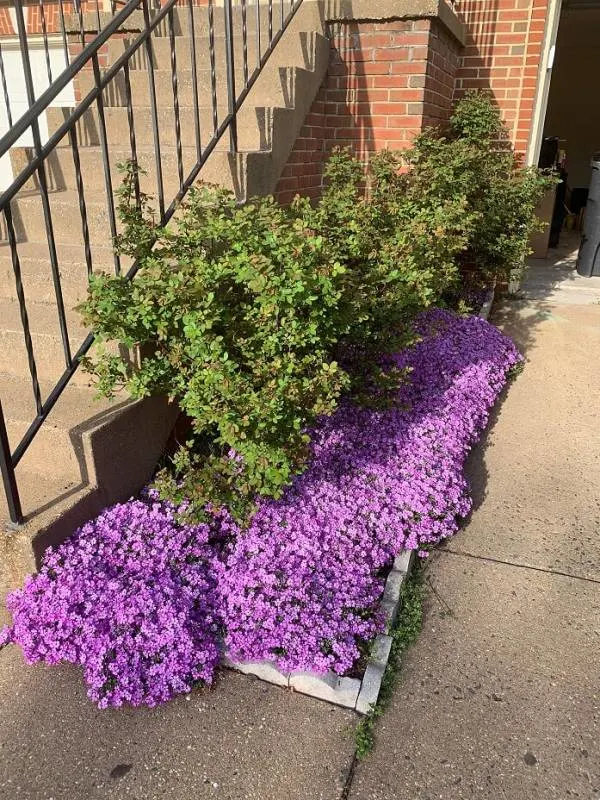
That’s all for today!
Conclusion
Choosing the right plant for your garden can truly enhance the beauty of your outdoor space. By opting for natural plants over artificial edging materials, you not only add colors and charm but also invite birds and butterflies into your garden.
Remember to consider factors like sunlight and soil type when selecting plants for your garden borders. Whether you prefer the colorful blooms of Dahlia or the fragrant foliage of Lavender plants, each plant adds its own unique beauty to your garden.
So, take your time and choose the best possible option for you.
Good luck!
